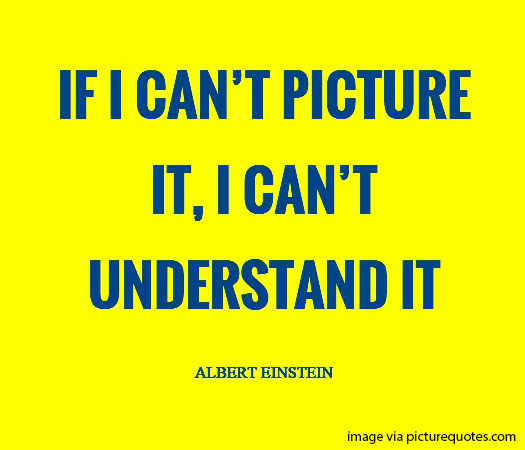When No Really Means: I Don’t Know
 What Does No Really Mean?
What Does No Really Mean?
I don’t know which specific issues you encounter when dealing with a client who knows only one answer to every suggestion or idea you present — NO — but I do know we all have them.
There are so many reasons and possible scenarios that can and will generate a negative response ,it is impossible to examine them all in detail. But after spending a lifetime in this industry, I have reached some conclusions and possibly a few solutions to that discussion stopping word.
By definition the word no means “to indicates a negative response… to refuse, deny, or disagree with something.”
Pretty straightforward on the surface, but oh so incredibly complex underneath. In reality, within any project there are two primary types of no: (1) item or function specific and (2) the more onerous project decline negative.
We have all had the experience in one way or another of running into a specific item, component, brand or function that the client/end-user initially says no to for any number of reasons above and beyond the simple budgetary constraints problem. Those can usually be addressed, negotiated or resolved with careful discussion, offering alternative approaches and calm, logical and benefit focused presentations, not always but in a high percentage of cases.
Killing the Whole Project?
It is this, the much more debilitating project no that I want to address in this article.
Realistically, there is always a straightforward solution to this scenario — walk away. And sometimes that is really the only logical course to take. If you find there is just no common ground to walk on, no connection between you, your staff and the client’s needs, people or goals, then walk away. Let someone else find an answer — if there is one to be had. We all know that there are clients out there for whom no solution, no proposal, no suggestion will ever hit the mark. Nothing you do at this point will help to foster and create the relationships needed on any project.
As one of my favorite observers of the human condition, Mark Twain put it so well: “Fiction is obliged to stick to possibilities, the truth… isn’t.” If the client’s view is one based on their fictional belief in there always being an answer they will like, then no matter how well you state the truth, you will always lose the argument, so know when to fold your cards and look for another hand to play.
Pulling Back from the Edge of Failure
When the customer is unable to visualize or aggregate the information being offered, that is the core of the problem. It is a common mindset. You are getting a no or a negative response not because they don’t want to do the project but because you have not given them any way to frame a picture of the results you offer.
As stated by one of history’s great minds, Albert Einstein, in the quote below, the issue is one of catching the attention of both the visually oriented thinke, AND those whose thought process is more verbally focused — at the same time.
You have no way of knowing which of the two pathways into the comprehension centers of your clients will work best, so you have to focus your efforts on delivering your ideas and concepts to both kinds of minds.
If you recognize this going in, then you will be prepared and aware of the problem and ready to grab a hold of situation before that NO comes out.

Technospeak, Geekspeak and Gobbledygood
As purveyors of various forms of technology and technology-based solutions, we as an industry have a nasty tendency to frame presentations and conduct discussions using a barrage of words that we thoroughly understand and are comfortable with. After all, we use it every day, we speak it among ourselves and we conduct business with our suppliers and vendors in this specialized tongue.
BUT — as noted above — the people we are selling to and creating solutions for do not and will never be fluent in our jargon. We should not (as far too many of us do) expect them to adapt to us; we have to adapt to them.
Let me illustrate this with a short story about solving a complex AV problem without a single word of technospeek or a mind-numbing PowerPoint full of geekspeak, stunning 3D renderings or VR style CAD models of a solution.
A Three Question Sale
A few years ago, we were lucky enough to be able to work with a large worship space on the renovation of a two-decade old sound system as part of a major building renovation and overall facility upgrade. As it turned out, we were actually the third potential design firm they had contacted. We were not made aware of, nor did we ask about any of the previous proposals, but simply approached the project with a three-question memo in response to their request.
We asked them to define for us:
- What was the primary problem they perceived with the existing system?
- What was a general maximum budget framework they were comfortable with for a solution to that problem?
- What restrictions, aesthetic, architectural or similar issues existed did we have to take into consideration?
Their response was both immediate and positive. They asked us to sit down with them to discuss the questions and get “a better understanding of our needs and goals.” This was precisely what we had hoped for and it led to the development of a methodology we have used ever since:
- Ask the questions
- Define the goals
- Present a demonstration of the solution
After an initial meeting, we suggested that their entire 12-person committee spend an hour or so the following Saturday at another local worship space of similar size and dimensions. We told them that the system they would hear was essentially what we would be proposing for their space. We suggested that by experiencing the design directly themselves, without a long, complex and potentially off-putting technical presentation, they could reach their own conclusions as to its ability to solve the problem they felt they had.
What we offered was for them to go to that other space during the Saturday afternoon youth service and simply watch and listen. They found this idea worth the time and agreed.
When we got to the other location I asked them to focus on only one thing — listening!
After about an hour, we all gathered back at their location and I requested they consider one question: Could they clearly understand the entire spoken word message being presented or not?
Keeping It Simple and Focused
By keeping this whole process low key, straightforward and non-technical, our goal was to allow the group to see how their perceived problem was solved and experience the result for themselves, without any pressure or need for consideration of anything other than “did it work or not?”
No technospeak, no complex drawings (yet), no complexity — just problem-solution.
The result was that we got the project not because we could overwhelm them with our expertise or swamp them with a complex and impenetrable wall of information, but because we framed the process in a manner they were comfortable with, and one which provide them with the ability to easily reach their own conclusions on the solution. They could do this because all we asked for was a simple YES or NO.
Of course, there was a lot more to do, details to be developed, budgets to be analyzed, designs to be approved and the rest of the normal project processes. However, by allowing the customer to sell themselves on the proposed solution we created a relationship which did not offer a reason to say no.
I Could Explain It But…

Another variation on a quote from Einstein succinctly summarizes this whole process and why it is crucial to ensure that you don’t force your customers into a situation that creates the problem the quote frames.
The sinkhole we must avoid creating or falling into is one where we mandate that our customers understand or comprehend information well beyond their comfort zone or experience.
Whether it is a worship space, a university lecture hall, a convention center, or [fill in your own favorite complex project here], there are certain to be members of the decision team that cannot, could not or do not understand what you are saying.
If that disconnect develops, it can rapidly cripple any on-going progress or stop the whole project dead in its tracks. It is essential that we recognize both as an industry and as individual professionals and experts that this dilemma can and will exist on every project, every time, with at least some of the people involved.
Remember it only take one influencer to say no to make things difficult — or worse, to kill your chances at success.
Think Carefully About What You Say and How You Say It
As should be clear by now, it’s not necessarily the solution you created that got a no from the prospects — it was the way presented it that caused the no.
If you placed your clients in the position of feeling they were unable to understand what you were saying or how you were going to achieve the goal they had in mind, you failed to make it possible for them to say yes.
You are welcome to adapt our three questions initial approach listed above to your own style and process, but I would very strongly encourage you to sit back and evaluate how you create your proposals, what they contain and how you present them. Do this with these three additional questions in mind:
- Is the information in a clear non-technical format?
- Did you directly address the problem and provide a definitive solution?
- Can you summarize your proposal in 30 seconds or less without any technobabble?
If the answer to any of these questions is no, expect the answer to your proposal to be the same.






